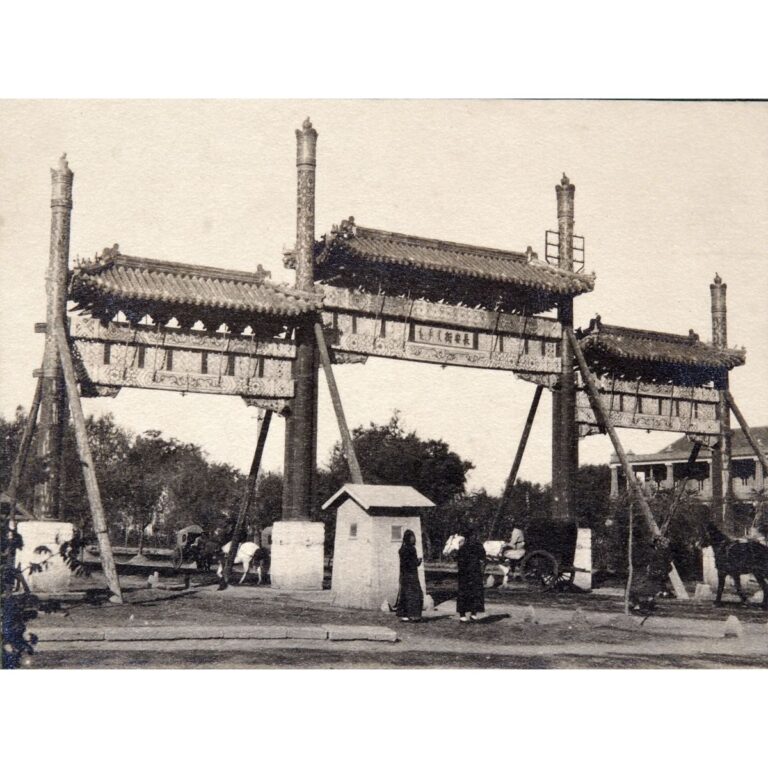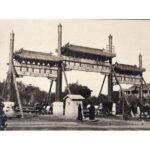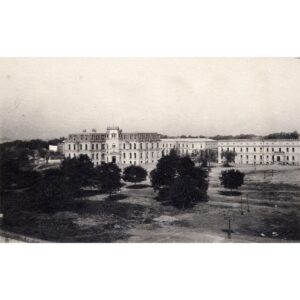Photography Memorial Pailou Arch in Front of the Front Gate
A black-and-white photograph showing the decorative commemorative pailou archway 牌樓 in front of the Zhengyang Gate (Zhengyangmen 正陽門), better known as the Front Gate (Qianmen 前門), which was the main entrance to the Inner City (Neicheng 内城). The memorial triumphal arch is a traditional architectural element in China, usually erected to commemorate an important person or as an entrance to important places. The memorial triumphal arch with its multi-part structure arches over several parallel streets. Such arches were usually made of wood or stone, as here. Most of them had three passages – the main passage in the middle and two side passages – whereas this memorial triumphal arch in front of the main door had five of them. In the photo we can see only the middle section. The communist regime demolished many of the city’s memorial triumphal arches, viewing them as remnants of feudalism.
The photograph is the 119th of 449 photographs of Beijing ... more
A black-and-white photograph showing the decorative commemorative pailou archway 牌樓 in front of the Zhengyang Gate (Zhengyangmen 正陽門), better known as the Front Gate (Qianmen 前門), which was the main entrance to the Inner City (Neicheng 内城). The memorial triumphal arch is a traditional architectural element in China, usually erected to commemorate an important person or as an entrance to important places. The memorial triumphal arch with its multi-part structure arches over several parallel streets. Such arches were usually made of wood or stone, as here. Most of them had three passages – the main passage in the middle and two side passages – whereas this memorial triumphal arch in front of the main door had five of them. In the photo we can see only the middle section. The communist regime demolished many of the city’s memorial triumphal arches, viewing them as remnants of feudalism.
The photograph is the 119th of 449 photographs of Beijing and its surroundings in the album of Ivan Skušek Jr., purchased during his stay in Beijing (1914–1920). In the handwritten inventory of the album, the photograph is referred to as Ehren- Pailou. (DZ, MV)





































Do you have a comment or additional information about the subject?